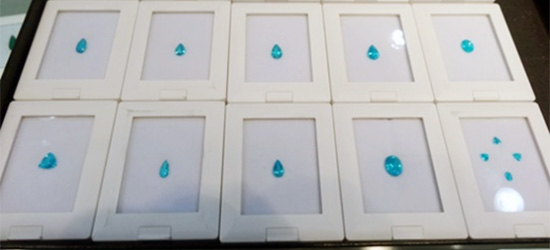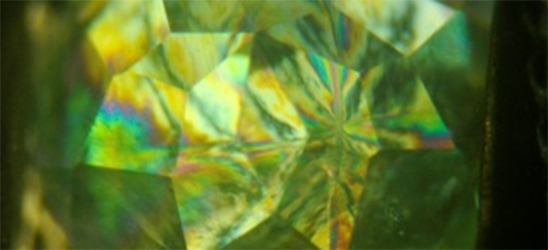On 11th December, the new issue of Gem Information Vol.43 was published. The main theme of it is “Good money to drive out bad money?” There were some finding of natural stone whose treated ones already prevailed in the market. In this issue, we focused natural green amber and black opal, both from Ethiopia. But as we know, there are treated ones dominated in the market. Now can the natural stones drive out the treated? Or as the adage, will treated ones stay dominating the market? Anyway, it should be known that now we have natural ones. The copy is available only in Japanese, unfortunately, but here is the English abstract for each article and caption for each chart and photo.
Demantoid garnet from Pakistan with horse-tail inclusion
At the end of 2014, new demantoid garnet from Pakistan was introduced to the Japanese market. They contain the horse tail inclusion like Russian material and also often have the strong distortion in the crystal. In the comparison, mostly it shows stronger green colour than Madagascar ones but weaker than Russian ones. Also, it is said that the Korkodino mine, Ural, Russia restarted the industrial production from spring, 2015 and supposed to increase its production. At the same time, there is a research about heating of demantoid garnet to alter its colour.
Pigeon’s Blood and Royal Blue: The trade colour codes
Trade colour name is a big issue in the recent gem trade and lab reports. In this article, we review the history of those names and introduce the some laboratories’ guidelines. Those colour code can tell more about gems than just regular word of ruby or sapphire. But also as currently it is quite different from labs to labs, it should be mentioned as lab’s opinions or own standard, not as the world market’s standard with consensus. 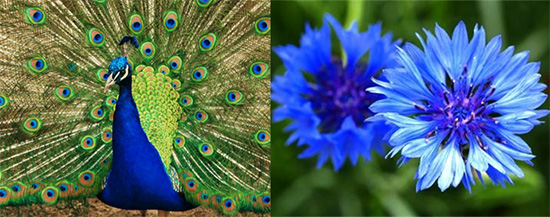
The update of melee sized synthetic diamond
Recently, we had a hearing to a CVD diamond manufacturer in India about the production of melee sized ones for jewelry. It was said that type Ib is easy to grow by CVD method but not demanded in the market. Also a Chinese manufacturer started the commercial production of melee stones by the modified HPHT method. They can be identified with current testing methods. And also they have some unique features such as magnetic, type IIb, Ni and Si doped. 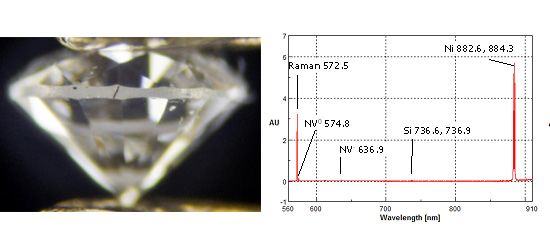
Natural Black Opal from Ethiopia
Black opal from Ethiopia was first introduced by a treated stone with carbonization of impregnated sugar. But recently, natural black opal was found from Wello district, Ethiopia. It is very dark black with a lot of play of colour. Its play of colour consists of orange-red mostly like white one. And each size of it is comparatively smaller than Australian one. It is because the body colour is too dark for the light to transmit from a little below the surface, unlike Australian opal which has lighter body colour. 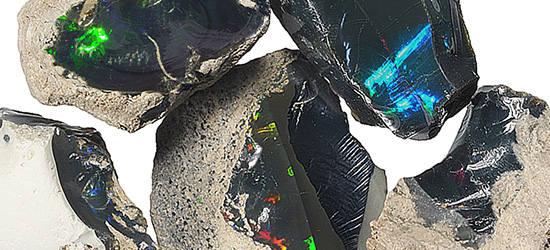
Natural Green Amber from Ethiopia
Heated amber / copal under the pressure to alter the colour to green prevailed in the market. But recently natural green amber was found from Ethiopia. The colour is fresh yellowish green to green like a tender green. With FT-IR spectra, it can be identified from the autoclaved ones. Also, it has a unique double layered bubble inclusion. It is not common that the natural one is found after the treated ones prevailed in the market. Let’s see how the natural ones drive out the treated ones. 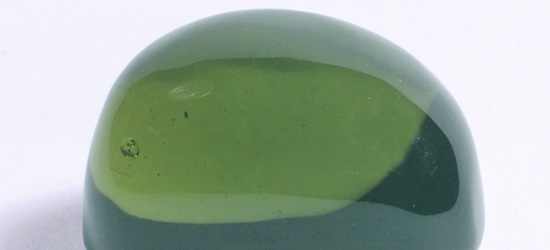
Tucson Gem Show 2015
At the Tucson gem show this year, there were some good news about the production of some gemstones. One of them is that the Brazilian Paraiba tourmaline got a big hit of good coloured stone since October, 2014. Also, there were some new products as unique shaped aquamarine mineral from Afghanistan, extremely fluorescent opal from Mexico and etc. 